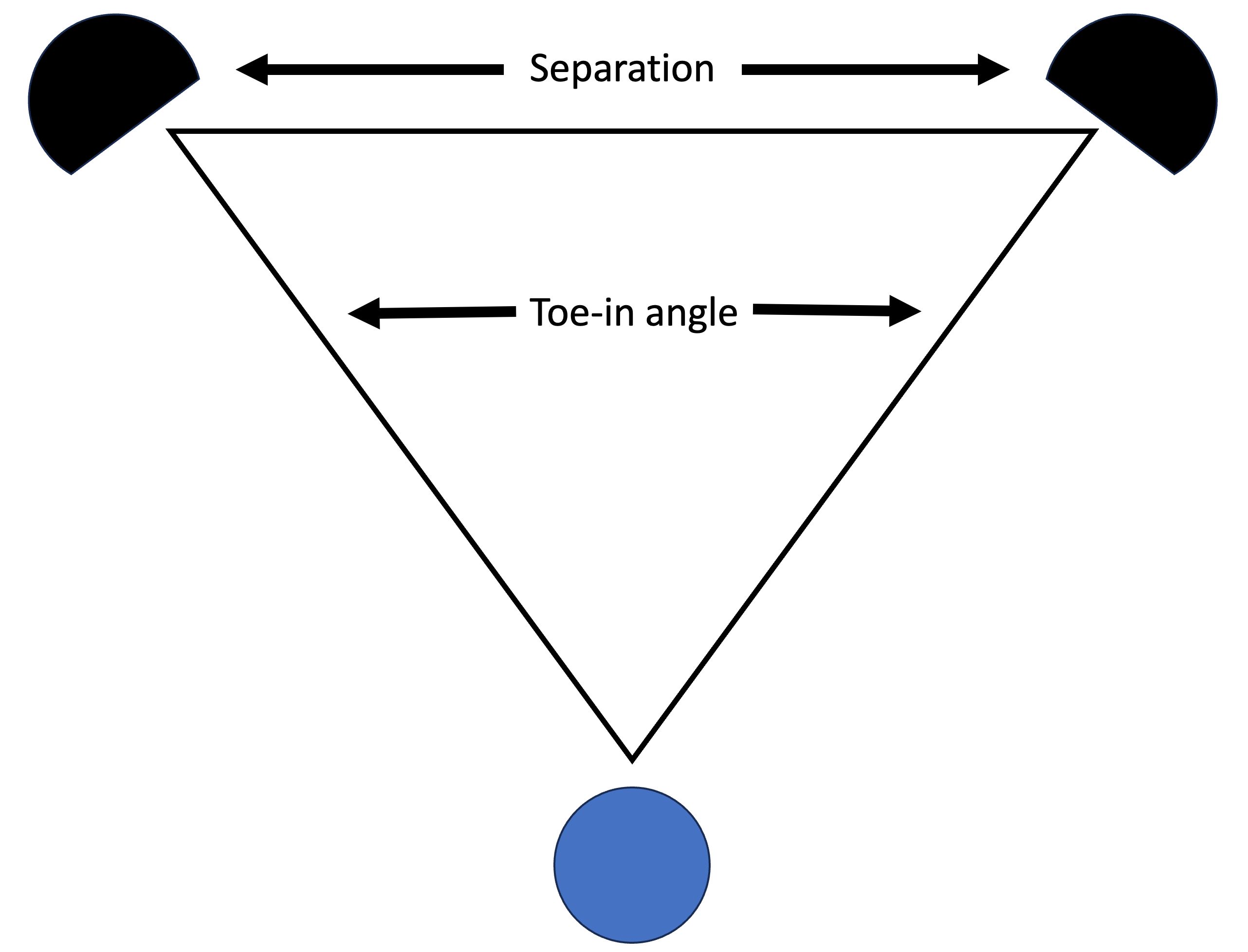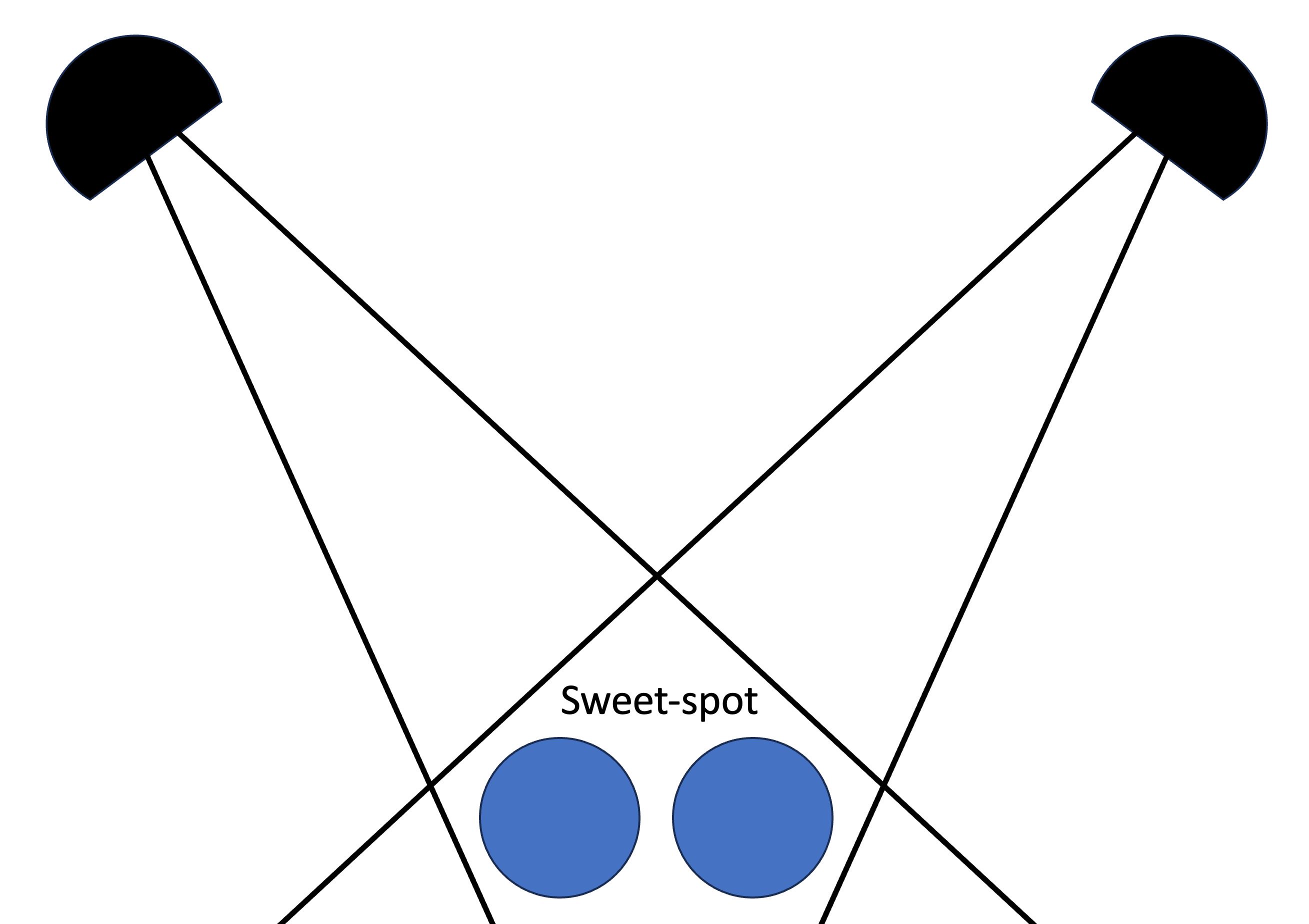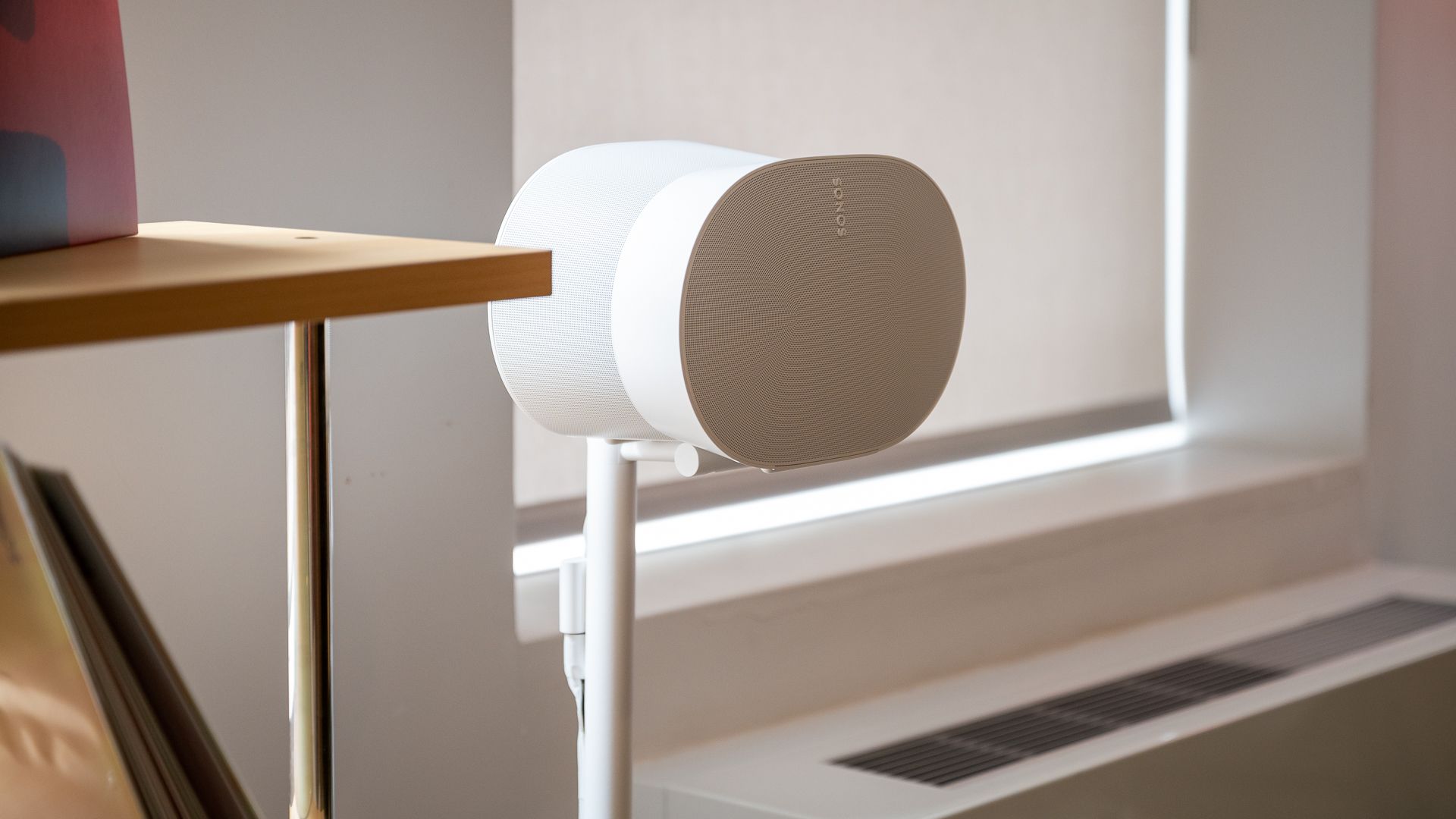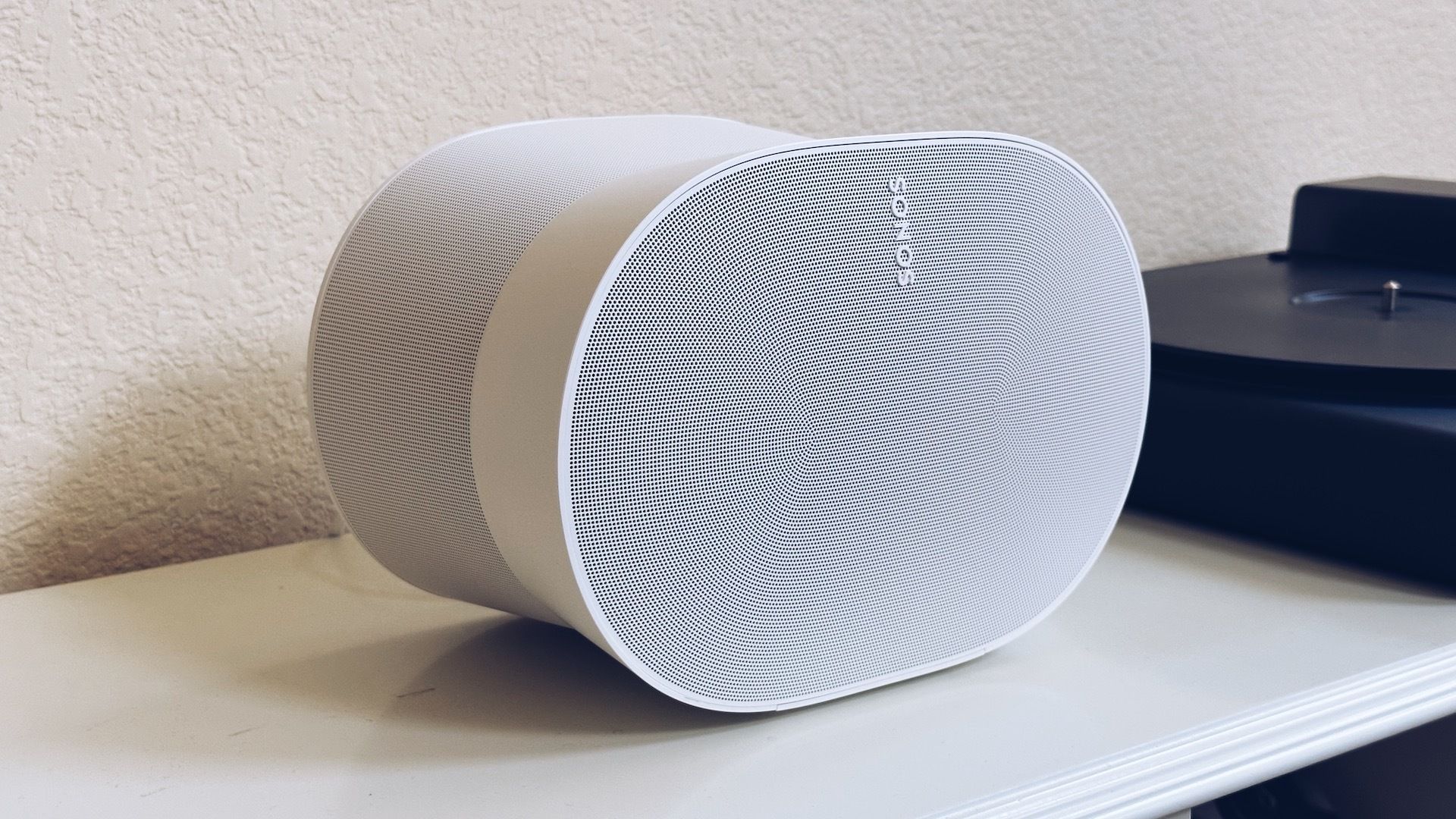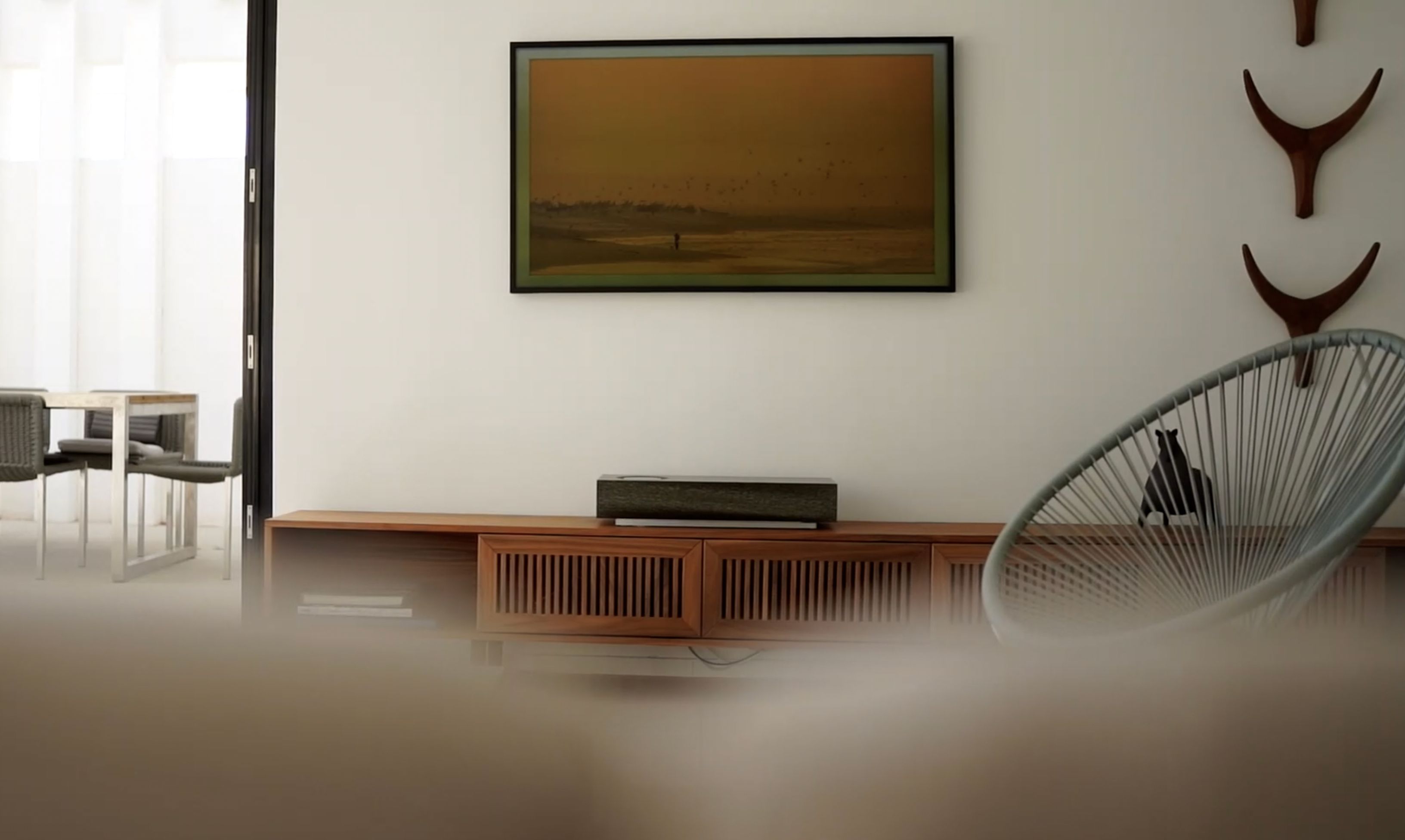Summary
- Your starting point is the speaker triangle: an equilateral setup with speakers angled toward the listener.
- Position yourself in the stereo sweet-spot and use a live recording to fine-tune speaker separation and angle.
- Ideally, speaker height will have the tweeters at ear level, but you do need to consider practicalities.
- We likely can’t eliminate sound absorption and reflection, but we can reduce it.
- Ideal separation from walls is usually the toughest challenge, but there are alternatives.
The arrangement of your stereo speakers can make a huge difference to your listening experience, and that’s true whether you have entry-level bookshelf speakers or high-end free-standing ones. The perfect speaker placement is almost impossible to achieve outside of a dedicated HiFi room, but the more of the following principles you’re able to adopt, the better the sound quality you’ll enjoy.
The Basics: The Speaker Triangle
The core concept is known as the speaker triangle.
This is an equilateral triangle, where the distance between the two stereo speakers, and between each speaker and the listener, is equal. We also angle the speakers along the lines of that triangle, so that they are pointed toward the listener—something known as “toe-in.”
Of course, sound waves spread out from each speaker, so a more detailed view of this triangle would look like this:
The area where the sound waves overlap, allowing us to hear equal volume from each of the two speakers, is known as the sweet-spot. Anywhere within this area we will get the proper stereo effect. We can see in this example that both listeners are within this area.
Speaker Separation
The starting point, then, is sufficient separation between the two speakers. If they are too close together, the sound waves from left and right channels will merge very close to the speakers, and you won’t hear the stereo effect anywhere else in the room.
But because we want to achieve that equilateral triangle, we also need to take into account the size of the room. The larger the room, and the further from the speakers you will be sitting, the greater the speaker separation needed.
You can fine-tune your arrangement by listening to a music track with good stereo imaging: where you can close your eyes and very clearly picture where each instrument is located in front of you. A good live album is usually best for this.
If you can’t tell where sounds are coming from, that probably indicates that the speakers are too close together. Conversely, if you can distinguish instruments on the left and right, but there’s no sense of anything directly in front of you, the speakers may be too far apart.
Toe-in Angle
Just as you can fine-tune the speaker separation by listening to a track with a well-defined stereo imaging, you can also do the same with the toe-in angle. Very small adjustments in angle can make a big difference, so it helps a lot to have an assistant here, to move the speaker angle in and out in tiny increments while you remain in the sweet-spot. Remember to keep everything symmetrical, so if you adjust the angle of one speaker, you should mirror that in the other one.
Height
In addition to horizontal placement, you ideally want to adjust the vertical position of the speakers for the optimum listening experience. The ideal here is to have the tweeters (the smaller drivers responsible for the higher frequency sounds) level with your ears when you are sitting in your usual listening position.
This is one area where compromise is almost inevitable. If you’re using bookshelf speakers, you may be constrained by the height of the shelf on which they are sitting, though small stands can be used to lift them a little if required. If you’re using freestanding speakers, then floor stands can be used to get as close as possible to the ideal vertical position, but you do also have to consider practicalities.
One of these is the risk of speakers being knocked from their stands. If your household includes children, pets, or just a somewhat clumsy adult or two, then the risk of the speakers being knocked off their stands and damaged may outweigh the benefits of perfect vertical positioning.
Minimizing Sound Absorption and Reflection
Returning to the speaker triangle, in an ideal world we want nothing in the path from the speakers to the sweet-spot.
We again have to acknowledge real-world practicalities here. For example, if your sweet-spot is a sofa, you may well have chairs either side of it which are somewhat in the path of the sound waves. Soft furniture will absorb sound, while hard furniture will reflect it.
It probably won’t be possible to entirely avoid this, but moving chairs out a small distance can make a surprisingly big difference. Look for other items that might absorb or reflect sound, such as bean-bags, large dog beds, tables, and so on, and keep these out of the speaker triangle as much as you can.
The Toughest Challenge: Separation From Walls
Speaking of practicalities, we now come to the one piece of speaker placement advice which is almost always impossible to follow in normal-sized rooms: separation from walls. This is again to minimize interference from reflected sound.
The usual advice here is to ensure speakers are at least two or three feet away from the nearest wall. This tends to require a relatively large room, especially given that we still want to retain our equilateral triangle. In many real-world homes, this simply isn’t practical.
The best approach here is to do what you can—some separation is better than none—and read on.
Alternatives When This Isn’t Possible
Given that we may be forced to have speakers closer to walls than the ideal, one thing we can do to minimize reflections is to have sound-deadening materials behind the speakers. The simplest way to achieve this if you can live with the aesthetics is to fit acoustic panels against the wall behind the speakers. You don’t need to line the entire wall with these, just have them within that 2-3 foot range.
If that conflicts with your decor (or your significant other!), another approach is to see whether you can position your speakers so they have curtains behind them. The heavier the curtains, the greater the benefit. Floor cushions are another possibility, bearing in mind that anything is better than nothing.
Hi-Tech Solutions
Finally, some hi-tech speakers have a feature known as room compensation or digital room correction. In some cases, you’ll be asked to select the appropriate option in a companion app.
For example, with the Naim mu-so system, you can choose between Corner, Near Wall, and Off, and the system will automatically adjust the sound profile to somewhat offset the issue.
Other systems may ask you to move around with your smartphone while the system plays sound to create an acoustic profile of the room, allowing it to automatically compensate for detected reflections. None of these offer a perfect solution, but they can be surprisingly effective.
If you’re able to follow all the advice above to the letter, then I’m jealous of the size of your home! For most of us, compromises will ever be needed, but the closer you can get to the ideal, the better your listening experience will be. If you also have a home theater setup, we have a separate guide for surround sound speakers.


